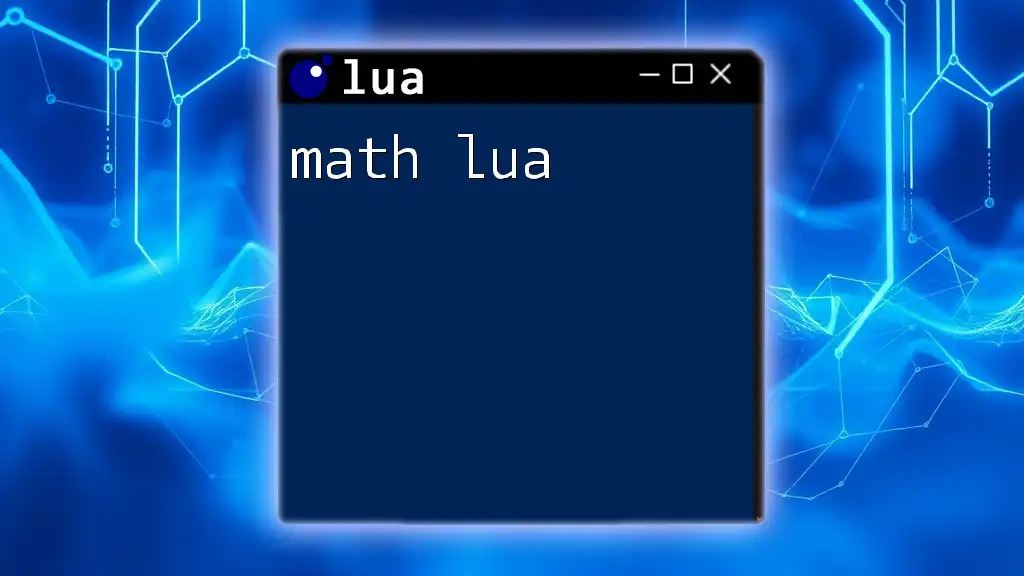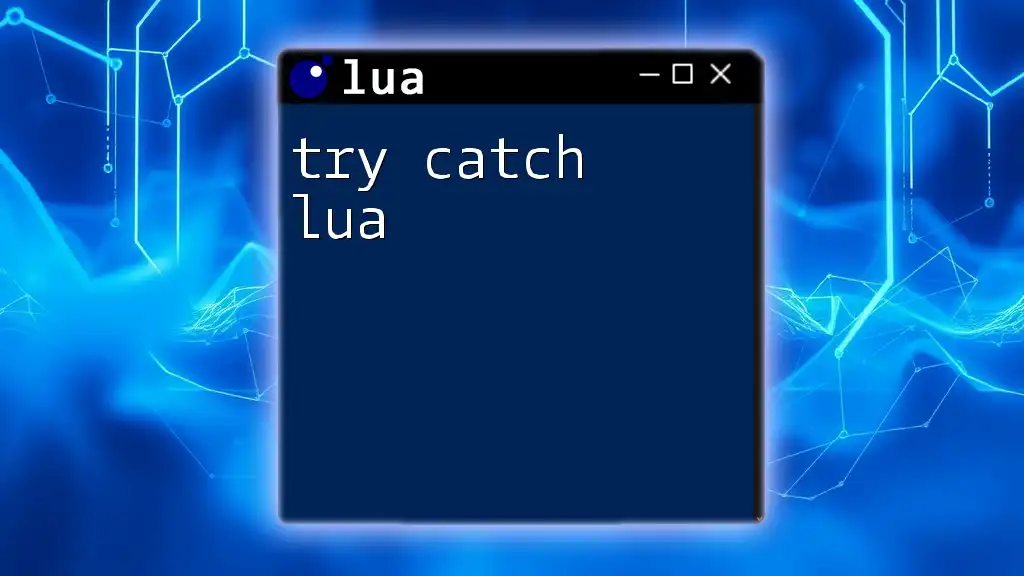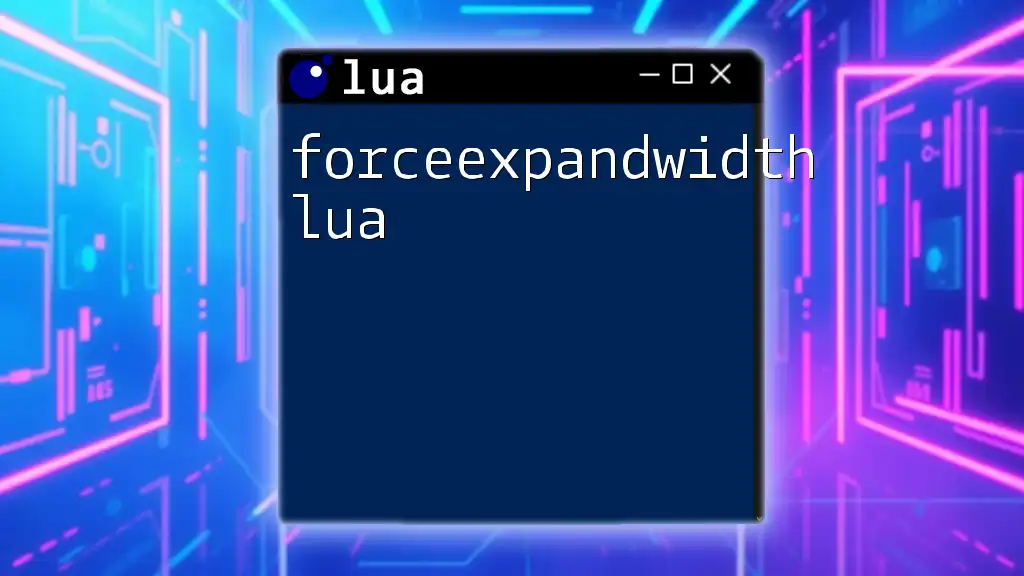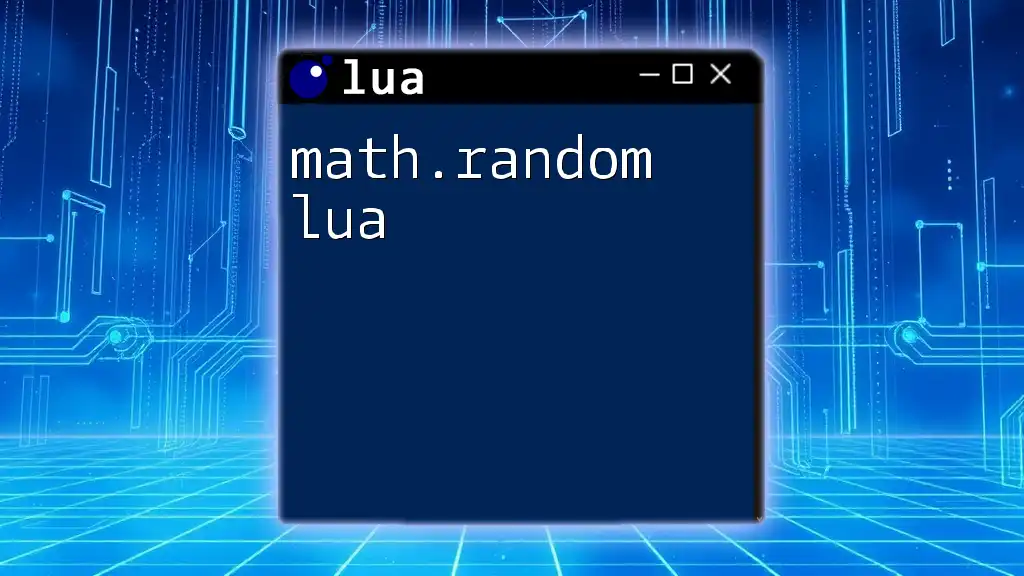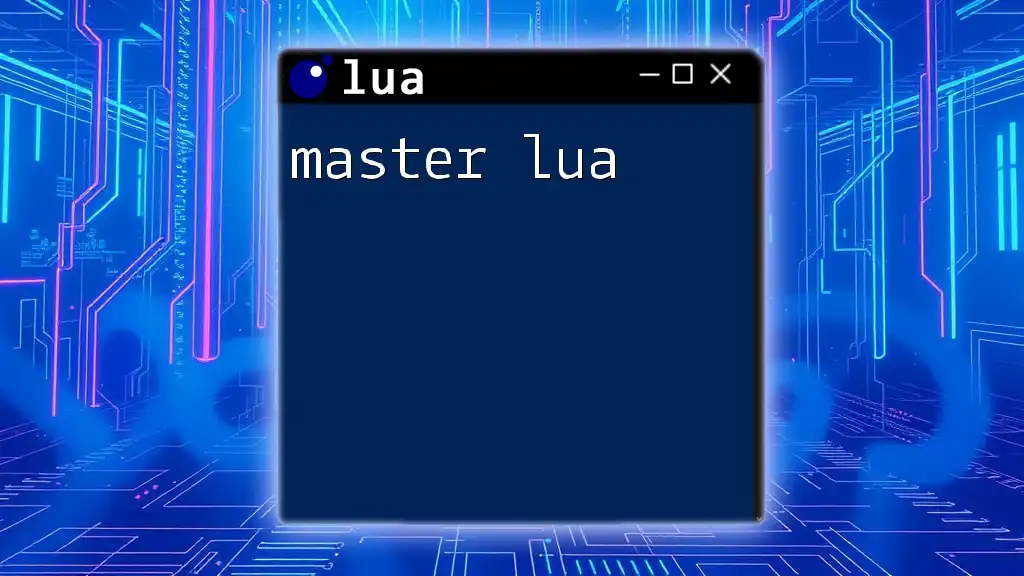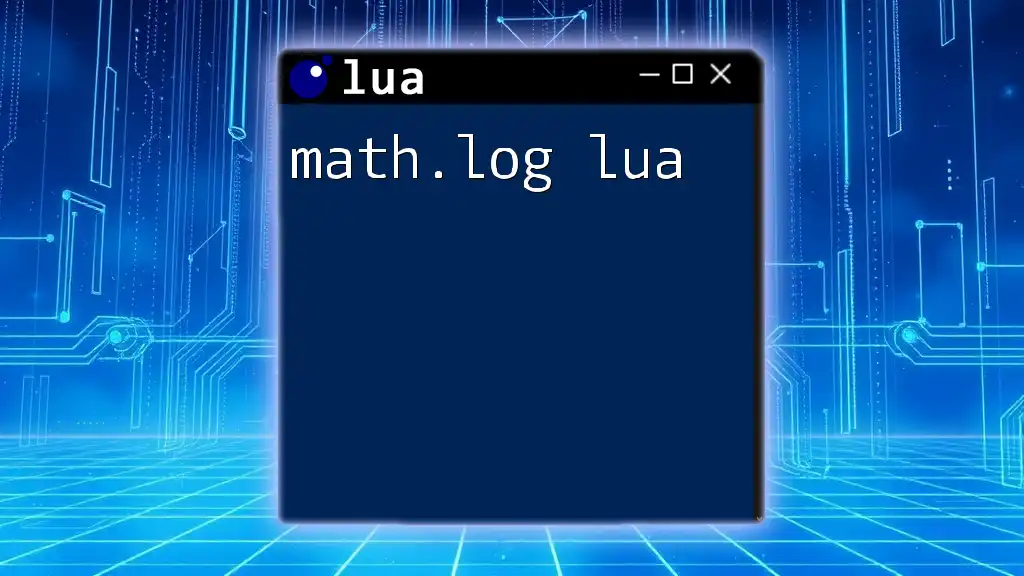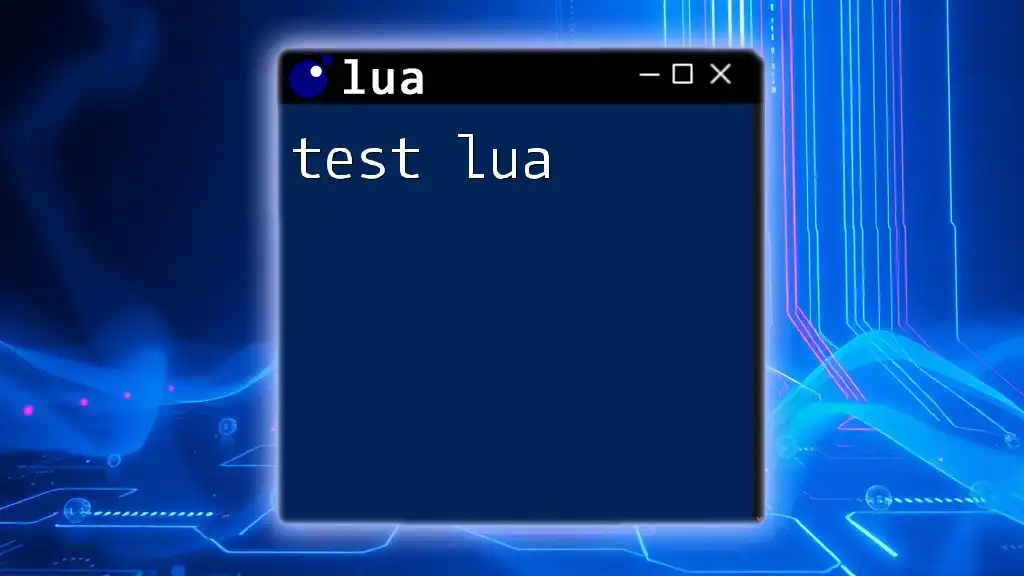In Lua, mathematical operations can be performed using built-in operators and functions, allowing for efficient calculations in your programs.
Here's a simple example of performing basic arithmetic in Lua:
-- Simple math operations
local a = 10
local b = 5
local sum = a + b -- Addition
local difference = a - b -- Subtraction
local product = a * b -- Multiplication
local quotient = a / b -- Division
print("Sum: " .. sum)
print("Difference: " .. difference)
print("Product: " .. product)
print("Quotient: " .. quotient)
Understanding Basic Math Operations in Lua
Addition, Subtraction, Multiplication, and Division
In Lua, basic math operations can be performed in a straightforward manner using standard operators. Here are the primary operations:
- Addition (+): Combines two numbers.
- Subtraction (-): Computes the difference between two numbers.
- Multiplication (*): Calculates the product.
- Division (/): Divides one number by another.
Below is an example demonstrating these operations:
local a = 10
local b = 5
print("Addition: " .. (a + b)) -- Output: Addition: 15
print("Subtraction: " .. (a - b)) -- Output: Subtraction: 5
print("Multiplication: " .. (a * b)) -- Output: Multiplication: 50
print("Division: " .. (a / b)) -- Output: Division: 2
In this example, basic arithmetic operations are performed, and the results are printed to the console. These operations are foundational in programming and can be applied in numerous scenarios, from calculating scores in a game to managing data in applications.
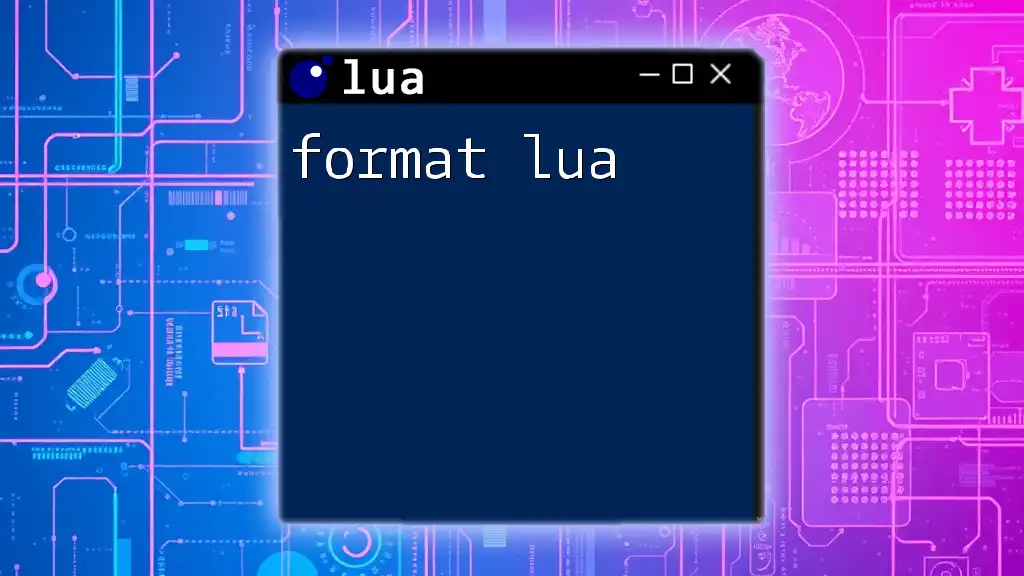
Advanced Mathematical Functions
Working with Built-in Math Library
Lua offers a robust math library that provides a variety of mathematical functions to handle more complex operations. Developers can take advantage of this library to perform common mathematical calculations quickly and efficiently.
Common Functions: sqrt, ceil, floor, and pow
Square Root Function
One of the most utilized functions in the math library is the square root function, which can be accessed as follows:
local number = 16
print("Square Root: " .. math.sqrt(number)) -- Output: Square Root: 4
The `math.sqrt` function computes the square root of a given number. It's essential for various applications, especially in game physics where you need to calculate distances.
Ceiling and Floor Functions
For rounding operations, Lua provides the `math.ceil` and `math.floor` functions. These are crucial in applications where control over numerical output is required.
local num = 3.7
print("Ceiling: " .. math.ceil(num)) -- Output: Ceiling: 4
print("Floor: " .. math.floor(num)) -- Output: Floor: 3
- Ceiling rounds a number up to the nearest integer.
- Floor rounds down to the nearest integer.
Understanding how to manipulate decimal data types can fundamentally change how data is managed in your applications.
Power Function
Exponentiation can be handled using the `math.pow` function. This is particularly useful in algorithms that require exponential growth calculations.
print("Power: " .. math.pow(2, 3)) -- Output: Power: 8
Here, `math.pow(2, 3)` computes 2 raised to the power of 3, demonstrating how this function can be used to solve a variety of mathematical problems.

Trigonometric Functions
Introduction to Trigonometry in Lua
Trigonometric functions such as sine, cosine, and tangent are another integral part of the math lua library, especially in graphics and game development where angles and rotations are frequently used.
Using Trigonometric Functions: sin, cos, tan
Sine Function
To compute the sine of an angle, Lua offers the `math.sin` function. Keep in mind that angles must be in radians.
local angle = math.pi / 2 -- 90 degrees in radians
print("Sine: " .. math.sin(angle)) -- Output: Sine: 1
Degrees must be converted to radians and vice versa when using trigonometric functions, as they only accept the radian measure.
Cosine & Tangent Functions
Similarly, the cosine and tangent functions can be utilized in a similar manner:
print("Cosine: " .. math.cos(angle)) -- Output: Cosine: 0
print("Tangent: " .. math.tan(angle)) -- Output: Tangent: Infinity
These functions are vital in fields such as computer graphics, where they help determine object rotations and angles.
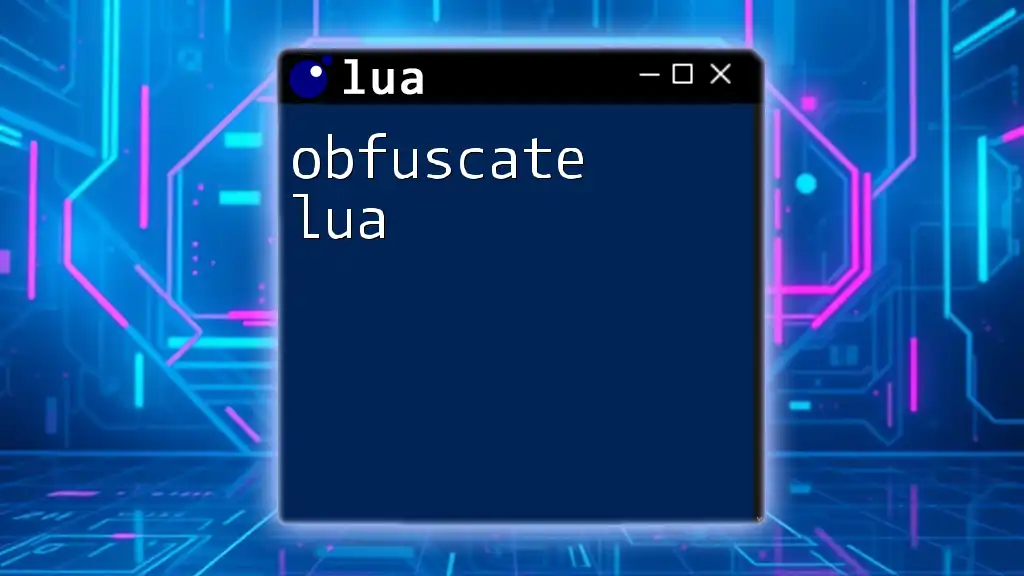
Random Number Generation
Generating Random Numbers with Lua
Random number generation is another area where Lua's math library shines. The `math.random` function is used to create pseudo-random numbers that can add an element of unpredictability to your programs.
math.randomseed(os.time()) -- Seed the random number generator
local randomNum = math.random(1, 100) -- Generate a random number between 1 and 100
print("Random Number: " .. randomNum)
In this example, we seed the random number generator using `os.time()` to ensure a different sequence of numbers each time the program runs. This is particularly useful in gaming for generating random events, encounters, or loot drops.
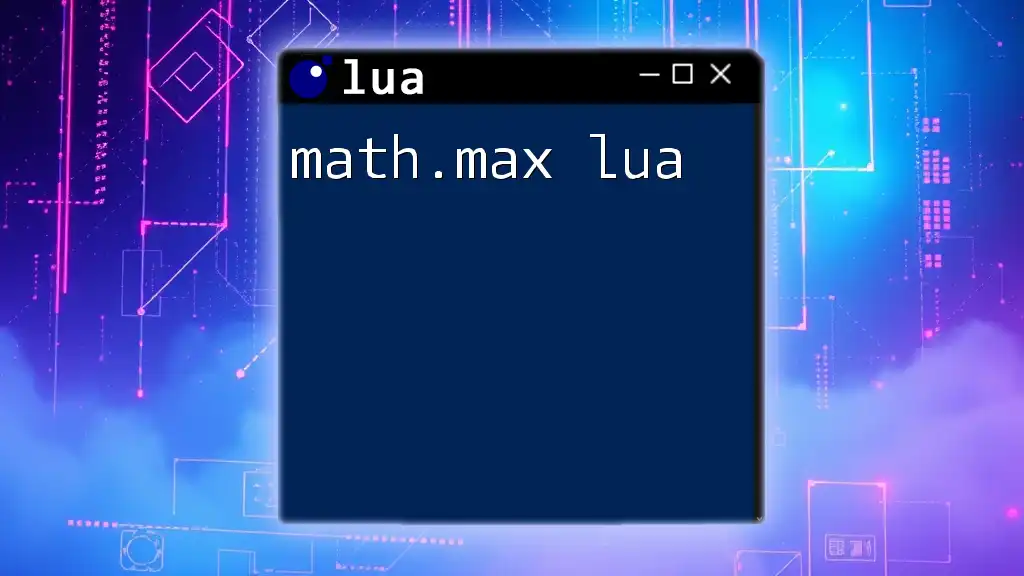
Using Math Operations in Real Life Scenarios
Game Development
Mathematics is fundamental in game development, where it supports a wide range of mechanisms. For instance, basic arithmetic calculations can determine scores, lives, and levels. In contrast, trigonometric functions can dictate character movements, object placements, and camera angles, providing a seamless experience.
Data Analysis
Mathematical functions in Lua are also invaluable in data analysis. By performing calculations such as averages, sums, or statistical analyses, developers can derive insights from data sets. For example, differentiating between average game scores in a player analytics tool employs various math functions to present valid data interpretations.
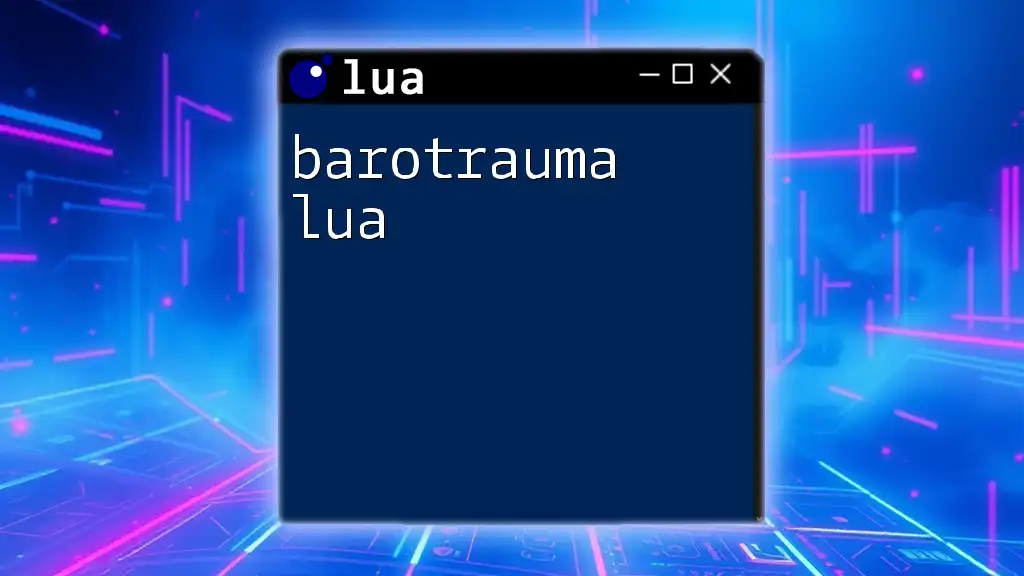
Conclusion
As demonstrated, mastering math operations in Lua is essential in building effective applications and games. Both basic and advanced mathematical functions are readily available, empowering developers to solve complex problems efficiently.
Whether you are manipulating scores in a video game or analyzing data structures, understanding math lua provides invaluable skills for any aspiring programmer.
Additional Resources
To further your learning, consider exploring:
- Lua's official documentation for in-depth understanding of functions.
- Community forums and discussion platforms to engage with fellow developers for tips and advice.
Continued learning in math operations will significantly enhance your programming capabilities, paving the way for more sophisticated projects.

